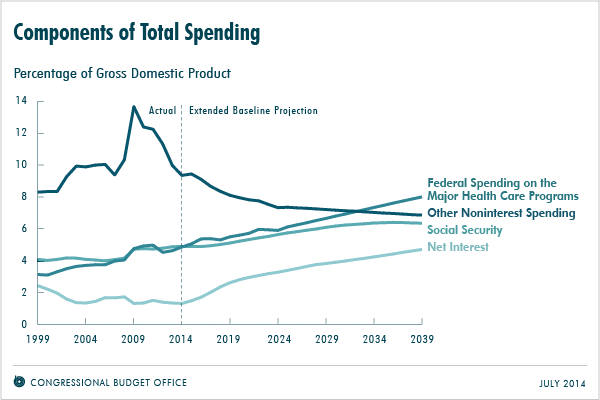Costs of Health Care Programs and Social Security Poised to Bust the Country
Peter Suderman reported the other day that the federal government's unsustainable spending spree continues apace, with debt expected to continue stacking up, "to a percentage of GDP seen only once before in U.S. history (just after World War II)," in the words of the Congressional Budget Office. The health care component of those expenses is getting the most attention, he noted.
Why is the health care component so talked about? Because health care and Social Security are projected to double in cost as a share of GDP. Let's quote the CBO again:
Federal spending for Social Security and the government's major health care programs—Medicare, Medicaid, the Children's Health Insurance Program, and subsidies for health insurance purchased through the exchanges created under the Affordable Care Act—would rise sharply, to a total of 14 percent of GDP by 2039, twice the 7 percent average seen over the past 40 years. That boost in spending is expected to occur because of the aging of the population, growth in per capita spending on health care, and an expansion of federal health care programs.
Interest payments will also more than double, from 2 percent of GDP to 4.5 percent. By contrast, "total spending on everything other than Social Security, the major health care programs, and net interest payments would decline to 7 percent of GDP by 2039—well below the 11 percent average of the past 40 years."

Which is to say that spending on Social Security, Medicare, and other health programs is expanding at a rate that the federal government can't begin to afford. Servicing the resulting debt is also becoming increasingly spendy.
Getting the federal government to live within its means doesn't involve trimming a little fat. It's going to require strictly reining-in and reducing its role.
Show Comments (74)